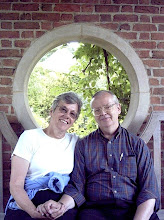One of the finest parallels to what has been said here is the description of his central experience given by Edward Maitland, the collaborator of Anna Kingsford. He has discovered that during reflection on an idea, related ideas become visible, so to speak, in a long series apparently reaching back to their source, which to him was the divine spirit. By means of concentration on this series, he tried to penetrate to their origin. He says: ‘I was absolutely without knowledge or expectation when I yielded to the impulse to make the attempt. I simply experimented on a faculty . . . being seated at my writing-table the while in order to record the results as they came, and resolved to retain my hold on my outer and circumferential consciousness, no matter how far towards my inner and central consciousness I might go. For I know not whether I should be able to regain the former if I once quited my hold of it, or to recollect the facts of the experience. At length I achieved my object, though only by a strong effort, the tension occasioned by the endeavor to keep both extremes of the consciousness in view at once being very great.
‘Once well started on my quest, I found myself traversing a succession of spheres or belts . . . the impression produced being that of mounting a vast ladder stretching from the circumference towards the centre of a system, which was at once my own system, the solar system, and the universal system, the three systems being at once diverse and identical…. Presently, by a supreme, and what I felt must be a final effort . . . I succeeded in polarizing the whole of the convergent rays of my consciousness into the desired focus. And at the same instant, as if through the sudden ignition of the rays thus fused into a unity, I found myself confronted with a glory of unspeakable whiteness and brightness, and of a luster so intense as well-nigh to beat me back…. But though feeling that I had to explore further, I resolved to make assurance doubly sure by piercing if I could the almost blinding luster, and seeing what it enshrined. With great effort I succeeded, and the glance revealed to me that which I had felt must be there…. It was the dual form of the Son . . . the unmanifest made manifest, the unformulated formulate, the unindividuate individuate, God as the Lord, proving through His duality that God is Substance as well as Force, Love as well as Will, Feminine as well as Masculine, Mother as well as Father.’ He found that God is two in one like man. Besides this he noticed something that our text also emphasizes, namely, ‘suspension of breathing’. He says ordinary breathing stopped and was replaced by an internal respiration, ‘as if by breathing of a distinct personality within and other than the physical organism’. He took this being to be the entelechy of Aristotle, and the inner Christ of the Apostle Paul, the ‘spiritual and substantial individuality engendered within the physical and phenomenal personality, and representing, therefore, the rebirth of man on a plane transcending the material’. This genuine experience contains all the essential symbols of our text. The phenomenon itself, that is, the vision of light, is an experience common to many mystics, and one that is undoubtedly of the greatest significance, because in all times and places it appears as the unconditional thing, which unites in itself the greatest energy and the profoundest meaning. Hildegarde of Bingen, an outstanding personality quite apart from her mysticism, expresses herself about her central vision in a similar way. ‘Since my childhood,’ she says, ‘I have always seen a light in my soul, but not with the outer eyes, nor through the thoughts of my heart; neither do the five outer senses take part in this vision…. The light I perceive is not of a local kind, but is much brighter than the cloud which bears the sun. I cannot distinguish height, breadth, or length of it…. What I see or learn in such a vision stays long in my memory. I see, hear, and know in the same moment…. I cannot recognize any sort of form in this light, although I sometimes see in it another light that is known to me as the living light…. While I am enjoying the spectacle of this light, all sadness and sorrow vanish from my memory….’
— C. G. Jung, Golden Flower, “Commentary by C. G. Jung,” R. Wilhelm & C. G. Jung, pp. 104-107.
At our point of time the I Ching responds to the need of further development in us. Occultism has enjoyed a renaissance in our times which is virtually without a parallel. The light of the western mind is nearly darkened by it. I am thinking now of our seats of learning and their representatives. I am a physician and deal with ordinary people, and therefore I know that the universities have ceased to act as disseminators of light. People have become weary of scientific specialization and rationalistic intellectualism. They want to hear truths which broaden rather than restrict them, which do not obscure but enlighten, which do not run off them like water, but penetrate them to the marrow. This search threatens to lead a large, if anonymous, public into wrong paths.
— C. G. Jung, “Appendix,” “In Memory of Richard Wilhelm,” in Ibid., p. 143.
Subscribe to:
Post Comments (Atom)

No comments:
Post a Comment